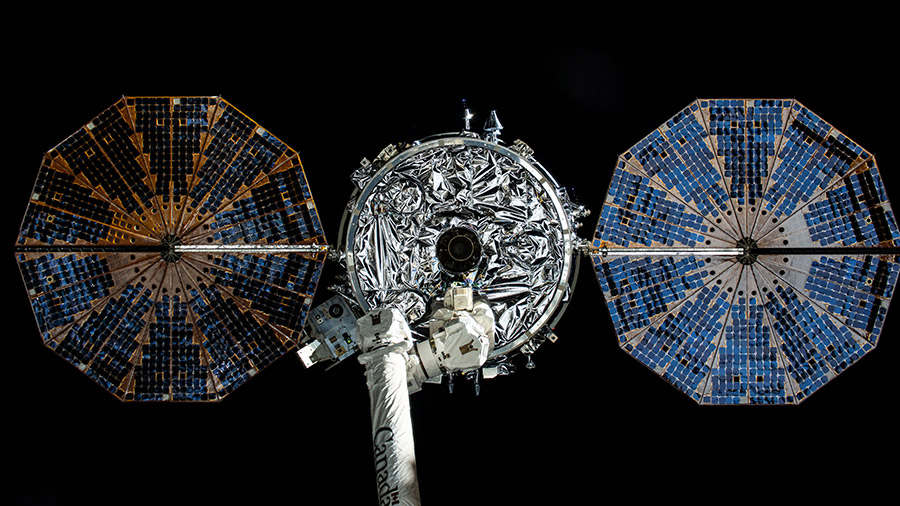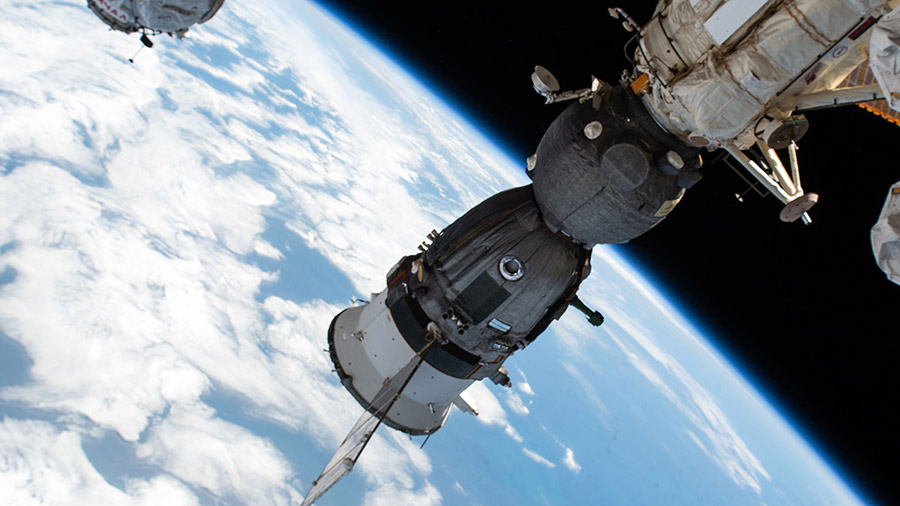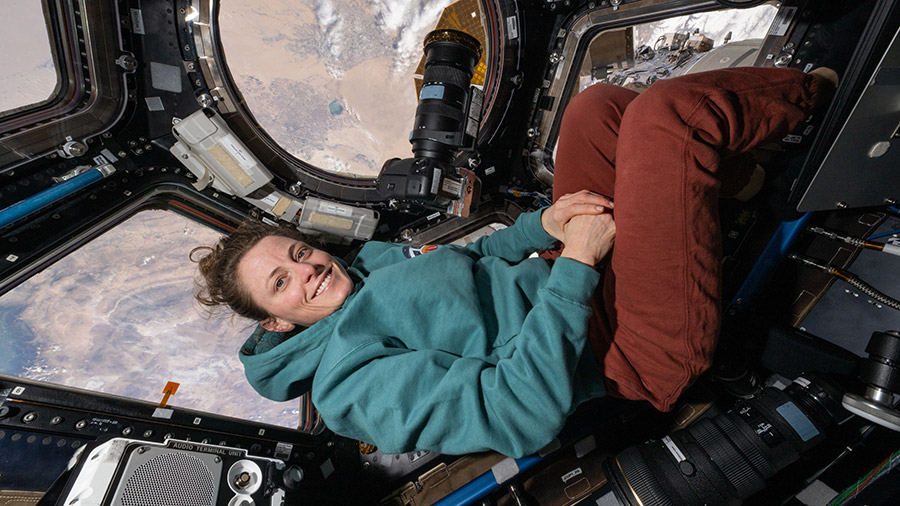
On Wednesday, space plants and free-flying robotics dominated the science schedule aboard the International Space Station. Orbital plumbing, cargo packing, and an emergency drill rounded out the day for the nine crew members living aboard the orbital outpost.
NASA astronauts Butch Wilmore and Suni Williams of Boeing’s Crew Flight Test continued exploring ways to effectively water plants in the weightless environment. The duo took turns throughout the day in the Harmony module testing how root models and plants of various sizes would absorb water in microgravity . The Plant Water Management study looks at techniques such as hydroponics and air circulation to nourish plants growing aboard spacecraft and space habitats.
Expedition 71 Flight Engineer Tracy C. Dyson coordinated with ground controllers and tested an Astrobee robotic free flyer’s ability to autonomously maneuver and recognizes gestures inside the Kibo laboratory module. She set up the cube-shaped, toaster-sized robotic assistant ahead of a student competition to write the best algorithms that will guide the Astrobee. NASA Flight Engineer Jeanette Epps activated the Astrobee before lunchtime and removed items in Kibo allowing Dyson to access the robotic free flyer’s docking apparatus. Epps also recorded another DNA research demonstration video for students on Earth.
NASA astronauts Matthew Dominick and Mike Barratt took turns on Wednesday cleaning up orbital plumbing tools used to service the Tranquility module’s bathroom, also known as the waste and hygiene compartment. Dominick also relocated protein crystal research hardware, loaded software on the Microgravity Science Glovebox computer, then reorganized cargo and trashed stowed in the Destiny laboratory module. Barratt trained Roscosmos Flight Engineer Alexander Grebenkin on the operations of the COLBERT treadmill then audited and stowed spacesuit components.
At the beginning of the day, the crew of the SpaceX Dragon Endeavour spacecraft, Dominick, Barratt, Epps, Grebenkin, trained for the unlikely event they would need to evacuate the station in an emergency. Dyson, who rode to the station aboard the Soyuz MS-25 crew ship, also joined the quartet reviewing their emergency responses and procedures during the hourlong session.
Cosmonauts Oleg Kononenko and Nikolai Chub began loading the Progress 87 cargo craft with garbage and discarded gear prior to its departure from the Zvezda service module in mid-August. Grebenkin had an off-duty day spending most of his time relaxing and working out on the treadmill and advanced resistive exercise device.
Beginning Monday, July 29th, the IMC Daily Summary will be discontinued.
To learn more about the groundbreaking science and engineering happening daily on the International Space Station, please visit the space station blog at https://blogs.nasa.gov/spacestation/, or browse a variety of space station research resources at https://nasa.gov/iss-science.
Learn more about station activities by following the space station blog, @space_station and @ISS_Research on X, as well as the ISS Facebook and ISS Instagram accounts.
Get weekly video highlights at: https://roundupreads.jsc.nasa.gov/videoupdate/
Get the latest from NASA delivered every week. Subscribe here: www.nasa.gov/subscribe









